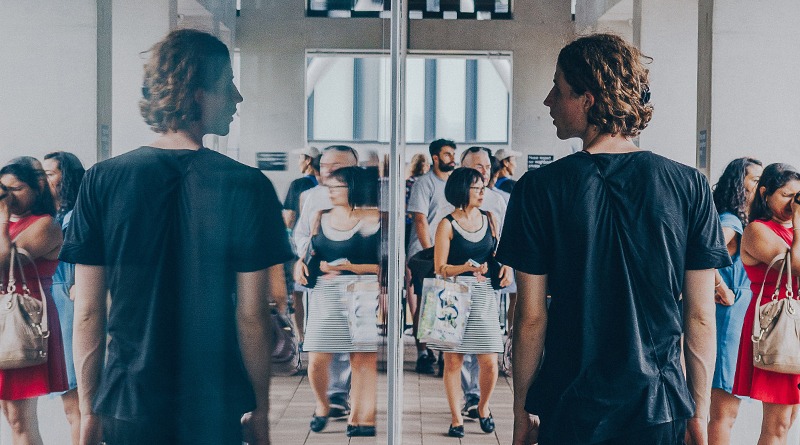
Living with a Brain Injury – Eight Years Out
By David A. Grant
Next week marks a special anniversary for me. On November 11th, I will honor the day that my life changed forever.
On a mid-fall day in 2010, I went out for my daily bike ride. At the time, I was cycling between twenty-five and thirty miles a day. Cycling was in my blood. The freedom of being out on two wheels is indescribable. I was at mile twenty-three of a planned thirty-mile ride when the unthinkable happened – I was broadsided by a teenage driver.
It was a catastrophic accident in the truest sense. My body lay broken on Main Street as the trauma team assessed me. My thoughts were on my wife Sarah. Between the screams of pain, my mind raced.
Was I going to die? Would I end up paralyzed? Would I ever see Sarah again?
Little did I know at the time, in addition to the physical carnage, I had sustained a traumatic brain injury. I would emerge from this life-changing event with a different brain.
To even begin to attempt to describe life with a traumatic brain injury in a few short words is all but impossible. If you were to ask me what changed, the answer is simple: Everything.
The very foundation of my personality shifted. And with that shift, people close to me fled. I was no longer the person that I was before my injury.
Time passed. My broken bones mended. My bruises healed. But a brain injury is unseen. My different brain meant that I was going to live the rest of my life with a term that heretofore I had never heard. To this day, I live with an invisible disability.
The early years were abysmally tough. Suicidal ideation defined much of my first year. I learned about ambiguous loss. I learned that I was no longer capable of doing many of the things I enjoyed before my injury. I learned to expect loss as part of the path that Sarah and I were now walking. But life was not all a veil of tears. I learned that I was not alone – that there was a vast and thriving community of others like me – others who were learning to live with different brains.
Early on, all we could do was attempt to get our collective feet under us. Brain injury “old timers” said that it would get easier. I was a sceptic, but somewhere deep inside, I trusted their voices, and accepted their encouragement. Realistically, I was running out of options, so I moved forward in blind faith.
Life has indeed gotten easier over the last eight years. In many respects, it is better than it’s ever been. I am still learning. I try to honor the limitations that my different brain places on my life. Those who know me occasionally call me an overachiever. Slowing down goes against everything inside of me, but if I don’t, the price I pay is a steep one.
The biggest blessing in all that has come to pass is the new sense of purpose that defines life today. Initially, Sarah and I were only able to receive, but today we are able to give. Today we live lives of service to those impacted by brain injury of all kinds. From our monthly magazine, HOPE Magazine, to administering one of the world’s largest social communities that serves the brain injury community, our experience and insight has helped to offer others hope that they too can indeed live meaningful lives.
For many years after my accident, there was a profound sense of loss around the anniversary of that day. I missed so much of my old life. I missed the ease and freedom that came with living with an uninjured brain. I mourned the loss of those who left my life, including a couple of my own children. A dark cloud fell on November 11th for many years.
But things are different now. If I could go back and change the events of that fated day another lifetime ago, I most likely would not. The new friends who dot the landscape of my life would be unknown to me today. The sense of purpose to serve humanity for a greater good would never have found its way into our lives. And the occasional peace that comes with knowing that our experience has lightened the loads that other carry would be absent.
Today, life with a different brain is still often challenging. But it’s the only life I’ve got, and I’m going to make the most of it. So far so good!
.
David A. Grant is an internationally recognized brain injury advocate, freelance writer, keynote speaker and brain injury survivor based out of southern New Hampshire. He is the author of Metamorphosis, Surviving Brain Injury, a book that chronicles in the first year-and-a-half of his new life as a brain injury survivor. His second title, Slices of Life after Traumatic Brain Injury, was released in 2015. In 2016, David and his wife Sarah coproduced To Be Inspired: Stories of Courage and Hope after Brain Injury, a complication book of survivor stories. David is also a contributing author to Chicken Soup for the Soul, Recovering from Traumatic Brain Injuries and Chicken Soup for the Soul, Why I chose Gratitude.
As a survivor of a cycling accident in 2010, he shares his experience and hope through advocacy work including public speaking as well as his weekly brain injury blog. David is a regular contributing writer to Brainline.org, a PBS sponsored website. He is also a BIANH board member as well as a columnist in HEADWAY, the Brain Injury Association of New Hampshire’s periodic newsletter.
David is the founder of TBI Hope and Inspiration, a Facebook community with over 20,000 members including survivors, family members, and caregivers as well as members of the medical and professional community. In late 2016, David’s brain injury blog was awarded “Best Brain Injury Blog of 2016” by Healthline.org, a leading health information provider.
Together with his wife Sarah, they publish HOPE Magazine. HOPE Magazine is the world’s largest monthly magazine dedicated to brain injury of all kinds and is now ready in over thirty countries around the world. HOPE Magazine is a free, all-digital monthly magazine that features stories by brain injury survivors and those who love them.
When David is not in front of his keyboard, he can be found cycling the byways of southern New Hampshire.




